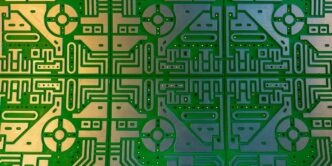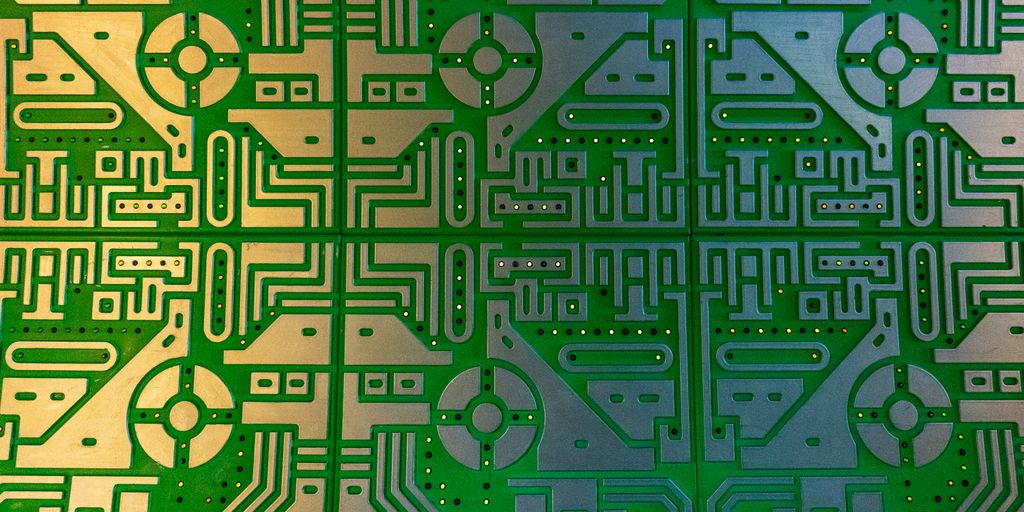Hey everyone, get ready for some big news about electronics components in 2025! This article will break down what’s happening in the industry, from how much money it’s making to the cool new tech coming out. We’ll also look at who the big players are and what’s making demand for these parts go up. If you’re interested in electronics components news, you’re in the right place to get the inside scoop.
Key Takeaways
- The electronics components market is growing fast, expected to hit $114.41 billion by 2029.
- New tech, like advanced semiconductors and AI in design, is changing the game for electronic parts.
- The market is split into passive, active, and electromechanical components, with lots of different uses.
- Big companies like Intel and Qualcomm are still major players, but new innovators are popping up.
- Demand for electronics components is increasing because of more smartphones, electric cars, and smart factories.
Market Growth Projections for Electronics Components
Current Market Valuation and Growth Rate
Okay, so let’s talk numbers. The electronics components market is doing pretty well, actually. In 2024, it was valued at $66.45 billion, and get this, it’s projected to hit $73.84 billion by 2025. That’s an 11.1% jump! A lot of this growth comes from the increasing demand for consumer electronics and more electronics in cars. Plus, factories are using more automation, and everyone needs more data storage. Oh, and don’t forget about the push for energy-efficient gadgets. It all adds up.
Future Growth Forecasts and Key Drivers
Looking ahead, things are expected to keep moving upward. By 2029, the market should reach $114.41 billion, growing at an annual rate of 11.6%. Electric vehicles and their charging stations are a big part of this. Also, edge computing is becoming more popular, and there’s a growing need for flexible electronics. Cybersecurity is also driving demand, along with smart city projects and a general move toward sustainable electronics. Basically, anything tech-related is helping the electronics components market.
Impact of Emerging Technologies on Market Expansion
Emerging technologies are really shaking things up. We’re seeing more advanced semiconductors, and companies are starting to customize components more. Artificial intelligence is even being used to design these components! Plus, everyone’s trying to make the supply chain more reliable and digital. And with 5G technology rolling out, there’s even more demand for electronic components. It’s a pretty exciting time for the industry. Here’s a quick look at some of the key trends:
- AI Integration: Using AI to design better components.
- Customization: Tailoring components to specific needs.
- Supply Chain Resilience: Making sure we can get the parts we need, no matter what.
Key Trends Shaping the Electronics Components Landscape
It feels like things are changing faster than ever in the electronics components world. From new materials to smarter manufacturing, it’s a wild ride. Let’s take a look at some of the biggest trends.
Technological Advancements Driving Innovation
Tech is always moving, and electronics components are no exception. We’re seeing some crazy advancements in materials science, like new polymers and ceramics that can handle way more heat and stress. Plus, there’s a big push for smaller, more efficient components. For example, Odyssey Semiconductor Technologies came out with some new GaN power transistors that are supposed to be a game-changer for power conversion. It’s all about making things faster, smaller, and more reliable.
Product Innovations Reshaping the Market
It’s not just about making existing stuff better; companies are coming up with entirely new types of components. Modular capacitors are a good example. TDK came out with a modular capacitor series called ModCap HF that’s designed for high-frequency switching. These kinds of innovations can really shake up how we design electronics. Here are some other areas where we’re seeing cool new stuff:
- Advanced Sensors: More sensitive and accurate sensors for everything from environmental monitoring to medical devices.
- Flexible Components: Components that can bend and flex without breaking, opening up new possibilities for wearable tech and flexible displays.
- Energy Harvesting Devices: Devices that can scavenge energy from their surroundings, like solar cells or vibration harvesters, reducing the need for batteries.
Supply Chain Resilience and Digitalization
The last few years have been a wake-up call about how fragile our supply chains can be. Companies are now investing big time in making their supply chains more resilient. That means:
- Diversifying Suppliers: Not relying on just one source for critical components.
- Building Buffer Stock: Keeping extra inventory on hand to weather disruptions.
- Digitalization: Using data analytics and AI to predict and respond to supply chain issues. This digitalization of supply chains is a big deal, helping companies see problems coming and react faster. It’s all about being prepared for the unexpected.
Segmentation of the Electronics Components Market
Breakdown by Component Type: Passive, Active, and Electromechanical
Okay, so when we talk about slicing up the electronics components market, one of the most basic ways to do it is by component type. You’ve got your passives, actives, and electromechanicals. Think of it like this: passives are the chill guys that don’t need external power (resistors, capacitors, inductors), actives are the ones doing the heavy lifting with power (transistors, diodes, ICs), and electromechanicals are where electricity meets mechanics (relays, switches, motors). It’s a simple way to get a handle on the market segmentation.
End-User Industries Driving Demand
Who’s buying all these components? Well, just about everyone, but some industries are bigger players than others. Consumer electronics is huge, obviously – smartphones, laptops, TVs, you name it. Then you’ve got networking and telecommunications, which is all about keeping us connected. Automotive is a massive growth area, especially with electric vehicles becoming more common. Manufacturing, aerospace and defense, healthcare – they all need their components. It’s a pretty diverse bunch, and each industry has its own specific needs and demands, which really shapes the market. The rising adoption of smartphones is expected to propel the growth of the electrical and electronics components market.
Sub-Segmentation of Passive Components
Let’s zoom in on those passive components for a sec. It’s not enough to just say "passive"; you gotta get more specific. You’ve got resistors doing their resistance thing, capacitors storing energy, inductors resisting changes in current, filters cleaning up signals, and transformers stepping up or down voltage. Each of these has its own market, its own applications, and its own set of key players. Here’s a quick breakdown:
- Resistors: Control current flow.
- Capacitors: Store electrical energy.
- Inductors: Resist changes in current.
- Filters: Remove unwanted frequencies.
- Transformers: Change voltage levels.
Major Players in the Global Electronics Components Market

Leading Semiconductor Manufacturers
Okay, so who’s actually making all these chips and components? It’s a pretty concentrated market, honestly. You’ve got the usual suspects, the big names that everyone knows, and then a bunch of smaller players nipping at their heels. The top dogs are still companies like Intel, Samsung, and TSMC. They’re the ones pouring billions into R&D and constantly pushing the boundaries of what’s possible. But don’t count out companies like Qualcomm and NVIDIA, especially as AI and specialized processors become more important. They’re definitely shaking things up. Here’s a quick look at the top semiconductor companies by revenue:
| Company | Estimated Revenue (2024) |
|---|---|
| Intel | $75 billion |
| Samsung | $65 billion |
| TSMC | $60 billion |
| Qualcomm | $35 billion |
| NVIDIA | $30 billion |
Key Players in Electrical and Electronic Components
Beyond just semiconductors, there’s a whole world of other components that keep our devices running. Think resistors, capacitors, connectors – the unsung heroes of electronics. Companies like TE Connectivity and Infineon Technologies are huge in this space. They’re not always household names, but they’re absolutely critical to the supply chain. Automotive is a big driver for them, especially with the rise of EVs. You also have companies like Murata and TDK that are massive in passive components. It’s a diverse market, but these are some of the giants. Here are some key players:
- TE Connectivity: Focuses on connectivity and sensor solutions.
- Infineon Technologies: Known for power semiconductors and security solutions.
- Murata Manufacturing: A leader in ceramic passive components.
- TDK Corporation: Specializes in magnetic and energy device solutions.
Emerging Innovators in the Industry
It’s not all about the established giants, though. There are always new companies popping up, trying to disrupt the market with innovative technologies. These emerging innovators are often focused on niche areas, like advanced materials, new manufacturing processes, or specialized applications. Keep an eye on startups working on GaN power FETs and SiC (silicon carbide) devices – they could be the next big thing. Also, companies developing new types of sensors for IoT applications are worth watching. The electronics components market is constantly evolving, and these smaller players are often the ones driving the most exciting changes. Here are some areas where emerging innovators are making waves:
- Advanced Materials: Developing new materials for better performance and efficiency.
- Specialized Sensors: Creating sensors for specific IoT and industrial applications.
- Sustainable Components: Focusing on eco-friendly materials and manufacturing processes.
Driving Factors for Electronics Components Demand
Rising Adoption of Smartphones and Consumer Electronics
Okay, so everyone’s got a smartphone, right? And not just phones – we’re talking tablets, smartwatches, the whole shebang. All these gadgets need electronic components, and that’s driving a huge demand. The more devices people buy, the more components get used. It’s pretty simple, really. I saw some stats that said something like 96% of people have a mobile phone. Crazy, huh?
Growth in Automotive Electronics and Electric Vehicles
Cars aren’t just cars anymore; they’re basically computers on wheels. Think about all the sensors, control units, and communication modules in modern vehicles. And with electric vehicles becoming more popular, the demand for specialized components is only going to increase. It’s not just about entertainment systems either; it’s about safety features, emission controls, and all sorts of advanced systems. The automotive industry’s expansion is directly fueling the need for more and better electrical components.
Expansion of Industrial Automation and IoT Integration
Factories are getting smarter, homes are getting smarter – everything’s getting connected. This whole Internet of Things (IoT) thing means more sensors, more microcontrollers, and more communication devices everywhere. Industrial automation is also a big deal, with companies using robots and automated systems to improve efficiency. All this requires a ton of electronic components. It’s like, every lightbulb, every thermostat, every machine is now a potential customer for semiconductor manufacturers.
Strategic Outlook and Market Assessment
Comprehensive Market Analysis and Future Scenarios
Okay, so let’s talk big picture. The electronics components market is a beast, right? It’s not just about making stuff; it’s about predicting where the world is going. We’re seeing a lot of different forecasts, but the general consensus is up and to the right. The key is understanding the interplay between technological advancements, economic shifts, and geopolitical factors.
Consider these potential scenarios:
- Base Case: Steady growth driven by consumer electronics and automotive. We see moderate innovation and gradual adoption of new technologies.
- Optimistic Case: Rapid adoption of AI and IoT fuels explosive growth. Major breakthroughs in materials science lead to smaller, more efficient components. Global semiconductor sales skyrocket.
- Pessimistic Case: Trade wars and economic downturns stifle growth. Supply chain disruptions become the norm, leading to shortages and price increases.
Opportunities in High-Potential Countries and Segments
Not all markets are created equal. Some countries and segments are poised for massive growth. Think about it: India and Southeast Asia are becoming manufacturing powerhouses. Electric vehicles are exploding in popularity. Industrial automation is a must-have for companies that want to stay competitive. Here’s a quick look at some hot spots:
- India: Huge potential due to its growing middle class and government initiatives to boost manufacturing.
- Southeast Asia: A hub for electronics assembly and a rising consumer market.
- Electric Vehicles: Demand for power electronics and sensors is going through the roof.
- IoT: The number of connected devices is growing exponentially, creating demand for a wide range of components.
Strategies for Navigating the Evolving Market
So, how do you win in this crazy market? It’s all about being smart, agile, and ready to adapt. Here are a few ideas:
- Invest in R&D: Stay ahead of the curve by developing innovative components that meet the needs of emerging technologies.
- Diversify your supply chain: Don’t put all your eggs in one basket. Build relationships with multiple suppliers in different regions.
- Focus on sustainability: Consumers and businesses are increasingly demanding eco-friendly products. Develop components that are energy-efficient and made from sustainable materials.
- Embrace digitalization: Use data analytics and AI to optimize your operations and make better decisions. The electronics components market is changing fast, so you need to be able to react quickly.
Semiconductor Industry Performance and Market Share

Global Semiconductor Revenue Growth
Okay, so the semiconductor industry is doing pretty well, all things considered. Forecasts show about 11% growth this year, which should put the total revenue around $697 billion. That’s a lot of chips! A big part of this is because of the huge demand for data centers and AI stuff. I saw a report that said last year, the industry grew by over 20%, so things are still moving in a good direction, even if it’s not quite as crazy as before. The electronics supply chain is definitely feeling the effects.
Top Semiconductor Suppliers by Revenue
The rankings at the top are always interesting to watch. NVIDIA apparently jumped way up to first place last year, which is pretty wild. Here’s a quick look at the top players, based on some recent data:
| Rank (2024) | Rank (2023) | Company | Revenue (2024) ($M) | Market Share (2024) | Revenue (2023) ($M) | Growth Rate (%) |
|---|---|---|---|---|---|---|
| 1 | 3 | NVIDIA | 76,692 | 11.7% | 34,846 | 120.1% |
| 2 | 2 | Samsung Electronics | 65,697 | 10.0% | 40,868 | 60.8% |
| 3 | 1 | Intel | 49,804 | 7.6% | N/A | N/A |
It’s a constantly evolving landscape, and these numbers can shift quickly depending on market conditions and technological advancements.
Shifts in Market Leadership and Competitive Landscape
What’s really interesting is how companies are trying to get ahead. Intel, for example, just released their Q1 2025 numbers, and they’re doing better than expected because their data center and AI stuff is selling like crazy. They’re pushing out new Xeon processors to try and grab even more of that market. Broadcom is another one to watch; they’re really focused on AI chips, and it seems to be paying off big time. The competition is fierce, and everyone’s trying to find their niche. Also, there are new rules about where chips are made that could shake things up a bit, especially for companies that have factories in certain countries.
Wrapping Things Up
So, as we look ahead to 2025, it’s pretty clear the electronics components world is going to keep changing fast. We’re talking about everything from tiny chips to the big stuff that powers our cars and gadgets. New ideas are popping up all the time, and companies are really pushing to make things better and more efficient. It’s a busy time, for sure, with lots of new things to watch out for. The future of electronics looks pretty exciting, and we’ll be here to keep you in the loop.
Frequently Asked Questions
What’s the current size and growth rate of the electronics components market?
The market for electronic parts is growing really fast. It was worth about 66.45 billion dollars in 2024 and is expected to hit around 73.84 billion dollars in 2025. This means it’s growing at a rate of 11.1% each year. This quick growth is happening because more people are buying consumer electronics, cars are using more electronic parts, factories are becoming more automated, we need more ways to store data, and people want devices that save energy.
What’s the future growth prediction for the electronics components market?
The electronics components market is set to keep growing quickly in the next few years. It’s predicted to reach 114.41 billion dollars by 2029, growing at about 11.6% each year. This growth will be driven by more electric cars and charging stations, the spread of edge computing, new flexible and printed electronics, the need for better cybersecurity, smart city projects, and the move towards environmentally friendly electronics.
How is the electronics components market broken down?
The electronics components market is divided into different types: Passive, Active, and Electromechanical. Passive components include things like resistors, capacitors, inductors, filters, and transformers. Active parts are items like diodes, transistors, integrated circuits (ICs), operational amplifiers, and voltage regulators. Electromechanical components cover relays, switches, connectors, circuit breakers, and motors. These parts are used in many areas, such as consumer electronics, communication systems, cars, factories, airplanes, defense, and healthcare.
Who are the big companies in the electronics components market?
Many big companies are important in the electronics components market. Some of the main ones are Infineon Technologies AG, NXP Semiconductors NV, Texas Instruments Inc., Toshiba Corporation, and Panasonic Corporation. Other key players include Advanced Micro Devices Inc., Intel Corporation, Broadcom Inc., Qualcomm Inc., and STMicroelectronics NV.
What’s making the demand for electronics components go up?
The demand for electronics components is increasing for several reasons. One big reason is the growing number of smartphones and other consumer electronics people are buying. Also, more electronics are being used in cars, especially with the rise of electric vehicles. Factories are also becoming more automated and using more Internet of Things (IoT) devices, which need a lot of electronic parts. For example, car production went up by 5.7% in 2022 compared to 2021, showing how much the car industry is boosting demand for these parts.
What new trends and products are shaping the electronics components market?
The electronics components market is changing fast, and companies are focusing on new technologies and products. For example, companies are creating advanced power transistors that are more efficient. They are also making new types of modular capacitors that can handle high switching speeds. These new products and technologies are helping companies stay competitive and meet the changing needs of the market.














